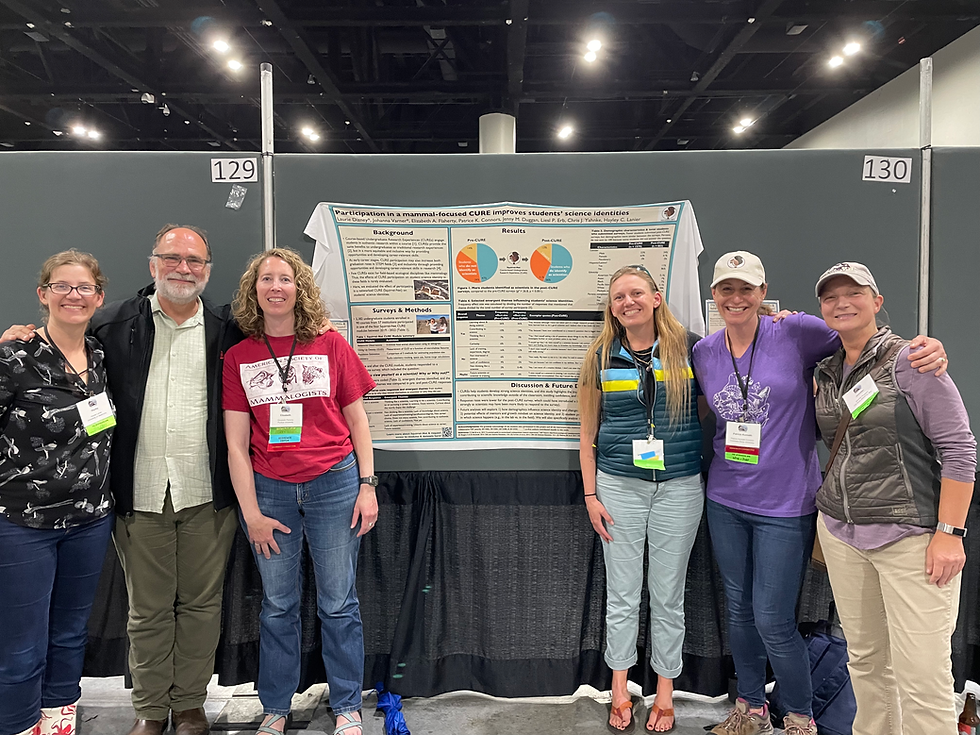A Squirrel-Net Module Update Worth Tweeting About!
- Jenny Duggan

- Dec 3, 2023
- 2 min read
Here at Squirrel-Net, we love squirrels…but sometimes an instructor needs to branch out! Squirrel-Net instructors Liz Flaherty (Purdue University) and Jenny Duggan (California State University, Monterey Bay) have spent the last couple of years piloting the use of the Behavioral Observations module with waterfowl and shorebirds. The venture has been so successful that Squirrel-Net has decided to create a national dataset where students can contribute behavioral observations on non-squirrel species.
Are you so stuck on squirrels that you cannot imagine how you would go about implementing the Behavioral Observations module on non-squirrels? Here is an example to get you started!
In her Natural History of California Wildlife course, Jenny has a section in which she covers animal behavior and the use of tools, such as ethograms, that are used to address research questions focused on behavior. Her students first use the Behavioral Observations module to collect behavioral data on campus squirrels. At this point, the students are just practicing use of an ethogram. While their squirrel data are contributed to the national dataset for squirrels, the students are not generating or testing hypotheses about squirrel behavior.

Next, while students are learning about the natural history of local shorebirds, they are asked to think about how shorebird behaviors might differ from squirrel behaviors and to create an ethogram for data collection on shorebird behavior. Whereas the main categories of behavior (Vigilance, Foraging, Alert Feeding, and Social) remain the same as in the ethogram based on squirrel behavior, specific behaviors differ between species. For example, like a squirrel, a shorebird might demonstrate vigilance by stilling its body and scanning for threats; but unlike a squirrel, a shore bird probably won’t stomp its foot or flick its tail! While the students think about the behaviors they expect to see in shorebirds, they also think about the factors that will influence these behaviors at our local Elkhorn Slough estuary in the Monterey Bay. Influential factors might include, for example, the foraging guild of the focal bird being observed, the presence/absence of a nearby flock, or the presence/absence of tourists.
After developing hypotheses about the factors influencing shorebird behaviors, we head out to the estuary to conduct behavioral observations and collect data. This is the fun part! While our goal is to collect behavioral data on shorebirds, we can’t resist taking a peek at the sea lions and sea otters too!


Using the data collected at the estuary, students work in groups to conduct statistical analyses that test their hypotheses about shorebird behavior. Finally, they learn how to create and present posters disseminating the results of their research. Students wrap up their research experience with an informal poster session in which they present drafts of their posters and share feedback. The feedback is used to make revisions before turning in a final poster that is (hopefully) ready for presentation at any appropriate conferences or symposiums the students might attend.

Now that Squirrel-Net has created a national dataset for non-squirrel behavioral observations, students all over the country will have a chance to get their feet wet exploring new questions in behavioral ecology.
We think that’s something worth tweeting- or quacking- about!



Comments